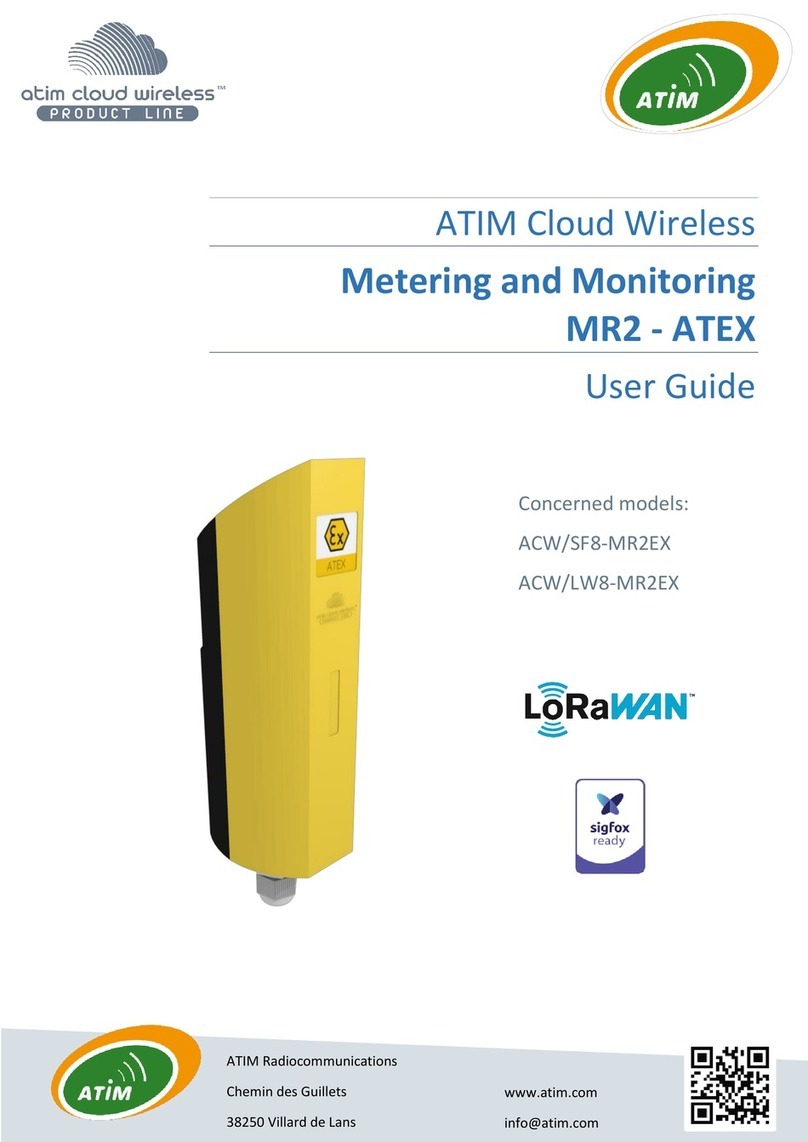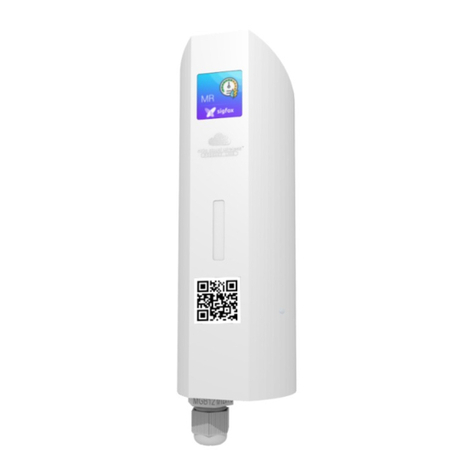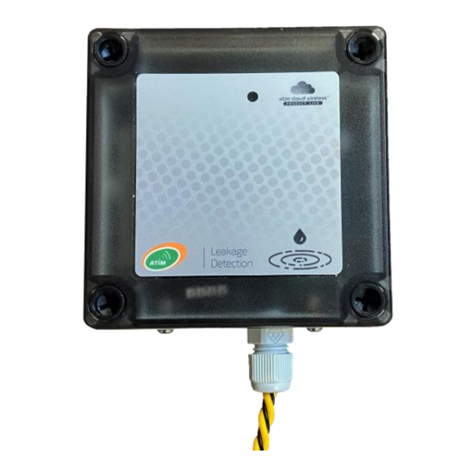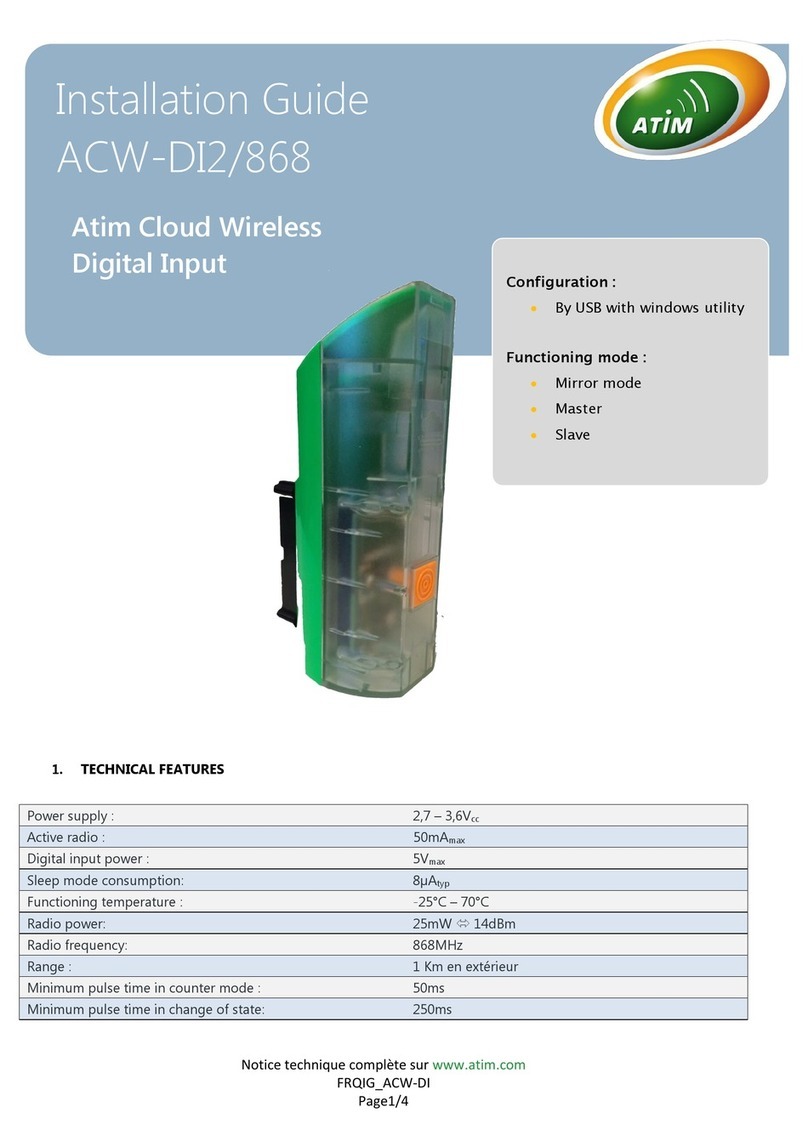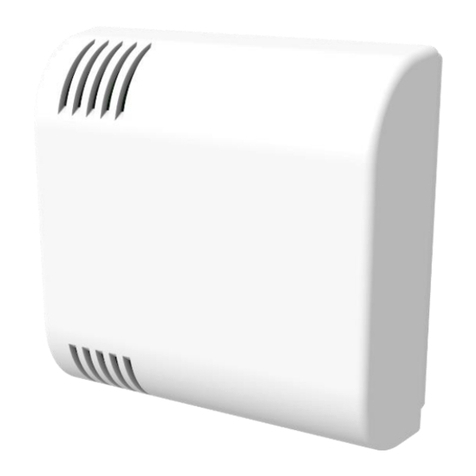2
ATIM_ACW-TMxP_UG_EN_V1.0
Table of contents
DOCUMENT VERSION HISTORY ........................................................................................................................................................... 4
DISCLAIMER......................................................................................................................................................................................... 5
TRADEMARKS AND COPYRIGHT........................................................................................................................................................... 5
DECLARATION OF COMPLIANCE.......................................................................................................................................................... 5
ENVIRONMENTAL RECOMMENDATIONS ............................................................................................................................................ 5
A.EXPLOSIVE ENVIRONMENT..................................................................................................................................................................... 5
B.ENVIRONMENT.................................................................................................................................................................................... 5
C.RADIO................................................................................................................................................................................................ 6
TECHNICAL SPECIFICATIONS................................................................................................................................................................ 7
A.PRODUCT ........................................................................................................................................................................................... 7
B.SENSORS FUNCTIONS............................................................................................................................................................................ 7
HOUSING............................................................................................................................................................................................. 8
A.SPACE REQUIREMENTS ......................................................................................................................................................................... 8
B.MOUNTING TO A SUPPORT.................................................................................................................................................................... 9
C.IDENTIFICATION................................................................................................................................................................................... 9
D.OPENING THE ACW HOUSING............................................................................................................................................................. 10
E.INSTALLATION ................................................................................................................................................................................... 10
F.WIRING OF THE PROBES...................................................................................................................................................................... 11
3 wires probe..................................................................................................................................................................................... 11
2 wires probe..................................................................................................................................................................................... 11
OPERATING ....................................................................................................................................................................................... 12
A.OPERATING MODE ............................................................................................................................................................................. 12
B.PRODUCT START UP ........................................................................................................................................................................... 13
C.TEST FRAME EMISSION ....................................................................................................................................................................... 14
D.DEEP SLEEP SETUP ............................................................................................................................................................................. 14
E.RADIO MODULE ACTIVITY .................................................................................................................................................................... 14
F.THRESHOLD EXCEEDED ....................................................................................................................................................................... 14
G.ANTI-FRAUD SYSTEM.......................................................................................................................................................................... 14
H.SUBSTITUTION TO THE MAGNET ........................................................................................................................................................... 14
I.BATTERY PASSIVATION........................................................................................................................................................................ 15
ACW CONFIGURATOR ....................................................................................................................................................................... 16
A.COMPATIBLE CONFIGURATOR VERSION ................................................................................................................................................. 16
B.CONFIGURATION OF THE ACW-TMXP ................................................................................................................................................. 17
Emission period and samples in the frame ...................................................................................................................................... 17
Keep alive frame period .................................................................................................................................................................... 17
Frame timestamp.............................................................................................................................................................................. 18
Product’s clock .................................................................................................................................................................................. 19
Versions of the product..................................................................................................................................................................... 19
Temperature probes configuration .................................................................................................................................................. 19
Digital input configuration................................................................................................................................................................ 19
Validation the configuration............................................................................................................................................................. 20
C.FACTORY SETTINGS ............................................................................................................................................................................ 20
D.UPDATE OF ACWS............................................................................................................................................................................ 21
FRAMES FORMAT.............................................................................................................................................................................. 22
A.SIGFOX AND LORAWAN .................................................................................................................................................................... 22
Classic frame ..................................................................................................................................................................................... 22
The different type of frames ............................................................................................................................................................. 23
Measuring frame............................................................................................................................................................................... 23












